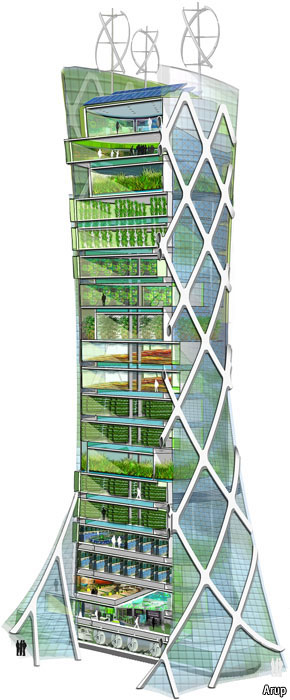Read this Post in English
¿Sabe dónde está hecha su ropa? Que manos recogieron los tomates que usted come? ¿Cómo los cosas que usa a diario se fabricaron? Su respuesta probablemente es no, y la verdad es que la mayoría de nosotros no tomamos el tiempo para averiguarlo. Podemos leer la etiqueta cosida en nuestra camisa o mirar la pequeña etiqueta colocada en nuestras manzanas para ver donde se cultivo, pero no lo hacemos. Casi siempre rápidamente cambiamos nuestro enfoque a otra cosa.
¿Por qué es importante esto?
Una pregunta más. ¿Se le antoja el chocolate? ¿Sabía usted que decenas de miles de niños y niñas trabajan en plantaciones de cacao en África Occidental, donde son maltratados, explotados y encarcelados? Esto es importante porque la mitad del chocolate que consumimos proviene de esta región, y mucho se está haciendo por niños esclavos.
Si pensamos que los bienes que consumimos no son hechos por mano de obra esclava, entonces estamos muy equivocados. La verdad es que un gran porcentaje de los bienes que consumimos y usamos a diario son realizados por mano de obra esclava. El Departamento de Trabajo de Estados Unidos calcula que doce millones de personas en cincuenta y ocho países de todo el mundo se ven obligados a trabajar en condiciones inhumanas, y donde le quitan su voluntad. Estas doce millones de personas en todo el mundo son responsables de mucha de la ropa que vestimos, de un gran porcentaje de los alimentos que comemos y de la creación de los productos que usamos todos los días.
Hay una fina línea entre la mano de obra barata y la trata de seres humanos. Aunque pensamos que los artículos fabricados en el extranjero se hacen a bajo costo debido a la mano de obra barata, muchas veces en realidad se debe a trabajo forzado o las personas que son forzadas a la trabajar contra su voluntad.
Incluso si hay algo que se fabrica en los Estados Unidos, no está libre de estas violaciones. En 2011, el caso más grande de tráfico humano en la historia del país fue descubierto cuando se alegó que las empresas de café, piña, y productos frescos estaban forzando a hombres y mujeres a trabajar en sus granjas. En Florida, mi estado natal, ha habido siete casos de esclavitud en la última década en los campos agrícolas. Esto es interesante teniendo en cuenta que durante los meses de invierno, Florida provee la mayoría de los productos para el este del país.
De acuerdo con un estudio del Departamento de Trabajo, los estadounidenses no quieren usar productos que se hicieron con trabajo forzado. El problema radica en que la población no está bien informada sobre el proceso en cómo sus bienes son adquiridos. Por lo tanto, no toman buenas decisiones en sus compras.
Para empezar a arreglar esta situación, el gobierno de Estados Unidos, específicamente, la Oficina del Departamento de Estado que Vigila y Combate la Trata de Personas se asoció con el Fair Trade Fund, una organización no gubernamental en California. Estos crearon y pusieron en marcha una iniciativa para crear conciencia sobre esta situación. Se llama la “huella de la esclavitud”, y permite que el público pueda generar un cálculo de su huella de la esclavitud. Este número le dice a la persona el número de esclavos que contribuyeron a la creación de los productos y mercancías que utilizan a diario.
crearon y pusieron en marcha una iniciativa para crear conciencia sobre esta situación. Se llama la “huella de la esclavitud”, y permite que el público pueda generar un cálculo de su huella de la esclavitud. Este número le dice a la persona el número de esclavos que contribuyeron a la creación de los productos y mercancías que utilizan a diario.
Cada persona puede participar en la encuesta donde se hacen preguntas sobre su elección de alimentos y vivienda, si son propietarios de casa, lo grande que es, cuántos hijos tienen, cuántos coches tienen, y qué bienes han adquirido. En promedio, del puntaje es de 55, sin embargo, en los países desarrollados puede ser mucho mayor. Por ejemplo, si usted es de 20 años de edad, soltero, alquila su casa, posee una computadora, una bicicleta y varios pares de zapatos la huella de la esclavitud es, probablemente, 100. También hay una aplicación que ayuda a los consumidores calcular su puntaje mientras hace sus compras. Pruebe la encuesta!
Entonces, ¿Cuántos esclavos trabajan para usted?
Para saber más sobre el tema de la responsabilidad del consumidor, por favor, lea el articulo de mi colega Julia Naime titulado Información y Consumo.
Regina Bernadin es una estudiante de doctorado en Nova southeastern University enfocándose en análisis y resolución de conflictos. Como pasante del SISGI Group, su principal área de interés es la resolución de conflictos, derechos humans y problemas políticos, economicos y culturales de América Latina. Su interés en los derechos humanos en el extranjero la han llevado a diferentes países latino americanos, incluyendo Colombia, Ecuador y Suriname.
 Assad’s history of broken peace agreements was a sign that he was not going to commit to a ceasefire. Unfortunately, the events of the last two weeks have proved that my skepticism was appropriate.
Assad’s history of broken peace agreements was a sign that he was not going to commit to a ceasefire. Unfortunately, the events of the last two weeks have proved that my skepticism was appropriate.











